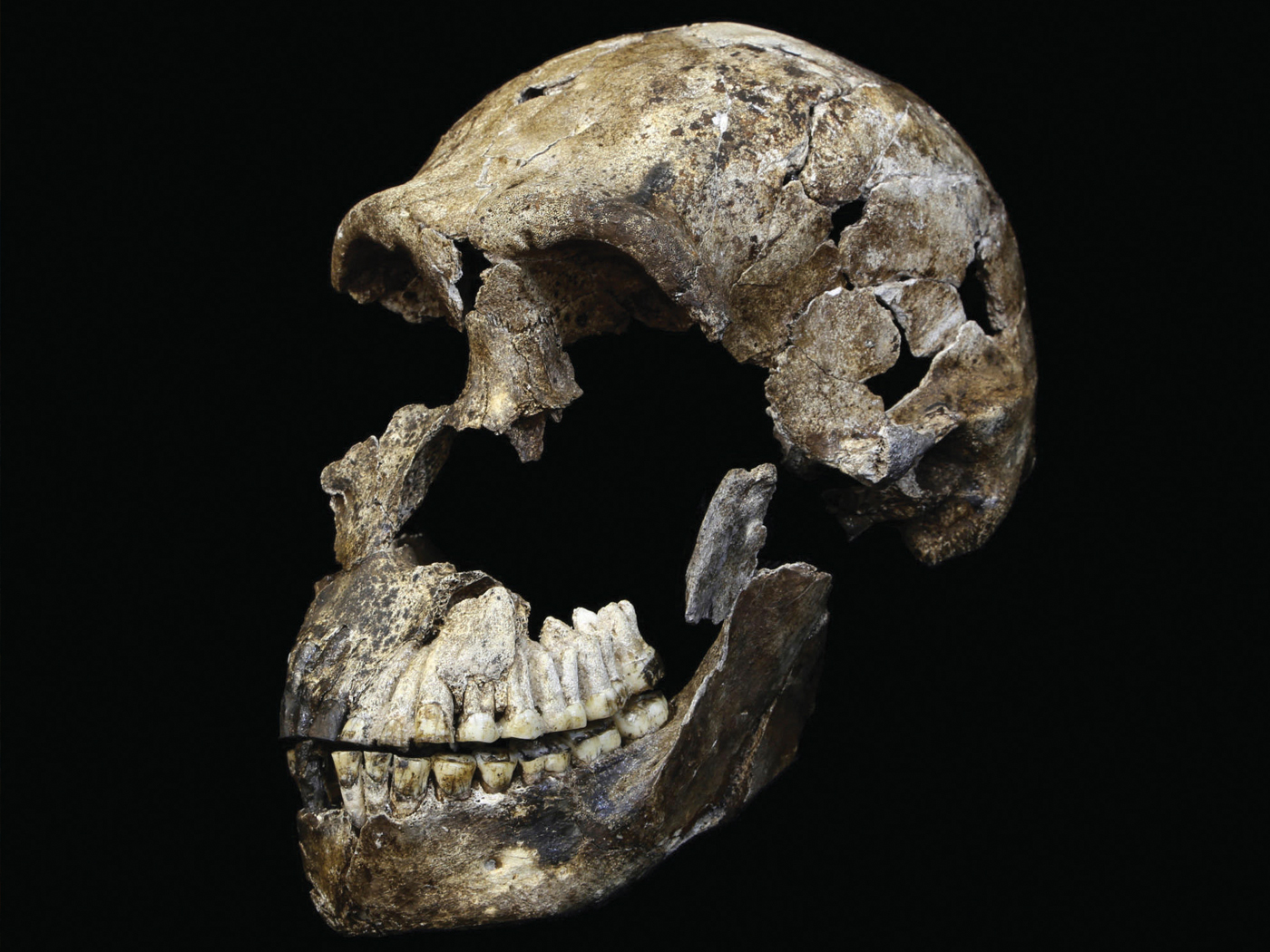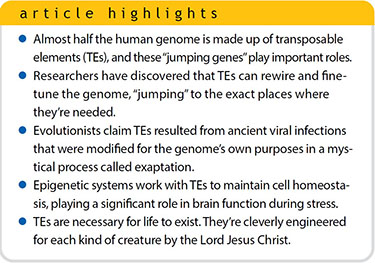
Transposable elements (transposons or TEs) are a specialized group of DNA sequences that can transpose or change positions in the genome. Some scientists have referred to them as “jumping genes.” They make up almost 50% of the total genome in mammals, and in humans they comprise at least 46% of the total genome. Given the huge amount of genomic real estate that transposable elements occupy, it’s important to understand their role and function.
Evolutionists have claimed that TEs were originally derived from the infectious insertion of viral DNA into the genomes of creatures. They claim that these TEs then parasitically replicated themselves and are nothing more than selfish DNA. However, research is now showing that these features are important to both genome structure and function. From a creationist perspective, it’s clear that TEs are designed features of the genome that play important roles in many facets of cell development, growth, and adaptation.
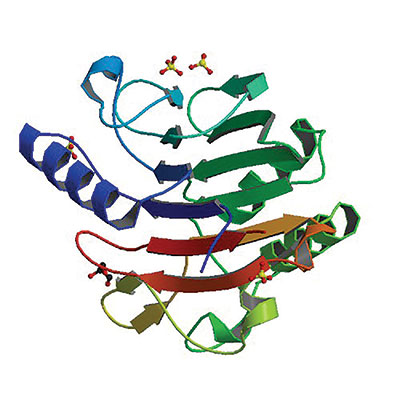
Transposable Elements: A Brief History of Their Discovery
Geneticist Barbara McClintock made an important discovery in the 1930s that eventually led to her later work in transposable elements. She observed that mutagenic X-rays did not produce isolated random changes in the DNA of corn plants. In fact, she astutely noticed that the chromosomal response to the damaging X-rays was not random but comprised an innate surveillance and repair system with untold complexity. Thirty-five years after McClintock’s first report of transposable elements, she was awarded the Nobel Prize. Regarding this discovery, McClintock said in her 1983 Nobel Prize speech:
There must be numerous homeostatic adjustments required of cells. The sensing devices and the signals that initiate these adjustments are beyond our present ability to fathom. A goal for the future would be to determine the extent of knowledge the cell has of itself and how it utilizes this knowledge in a “thoughtful” manner when challenged.1
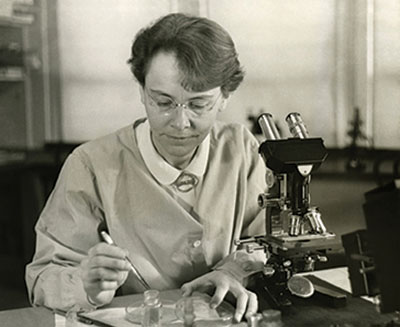
As an offshoot of McClintock’s work with irradiated corn plant cells, she also noted that breakpoints in chromosomes were not random.2 In addition to the predicted breakage and deletion patterns that produced abnormal ring-shaped chromosomal structures, McClintock obtained a large number of viable plants with unusual patterns of kernel color variegation. She noticed that some of the variegation patterns involved chromosome breaks that she documented by microscope photography of stained cell nuclei.
From 1944 to 1947, McClintock demonstrated that the observed chromosomal breakpoints were the result of genetic activity by what she called controlling elements (now called TEs). In other words, she observed that the TEs could move to new locations and modify the expression of genes where they inserted. Thus, the coloration patterns in the corn kernels were found to be caused by the interplay between a TE and a pigment gene. McClintock also found that the TEs themselves interacted with each other as activating factors. Amazingly, all of this research was done before researchers had access to modern DNA sequencing technology.

One of the first TEs McClintock discovered was associated with a chromosome breakage event she called Ds for dissociation locus. However, she also discovered that activity for Ds required another TE she termed activator, or Ac. The Ac element could also initiate its own transposition. McClintock located another notable TE she called suppressor-mutator (Spm). She noticed it could switch back and forth between an active and inactive form.
Remarkably, McClintock’s work in identifying TEs in the 1940s and 1950s through radiation, controlled matings, and light microscopy of stained chromosomes was vindicated as the golden age of molecular biology took off decades later. In 1983, researcher Nina Federoff isolated the Ac and Ds TEs and mapped the DNA sequences.3 It was found that the Ac element was a small TE that encoded a single transposase enzyme (facilitating transposition) and that the Ds element was a deleted derivative of Ac.
DNA Transposons
The TEs that McClintock discovered are in a TE class known as DNA transposons. These transpose by a “cut and paste” mechanism in which the transposon is excised from a region and moved to another via the aid of a transposase enzyme encoded by the transposon itself or another one.4,5
At the flanking ends of a DNA transposon are specialized sequences called inverted repeats. For the most part, DNA transposons only constitute about 3% of the genome of mammals and are not actively transposing. However, in some plant, insect, and yeast genomes, they can occupy 20 to 80% of the total DNA sequence.
RNA Transposons
RNA transposons, also known as retrotransposons or retroelements, are not cut and pasted like DNA TEs. Instead, they actually proliferate by being copied into an RNA intermediate in a “copy and paste” type of mechanism. This allows the active retrotransposons to retain their original location and structure in the genome while accumulating copies of themselves elsewhere.4,5
Retrotransposons come in a variety of distinct categories and are classified based on the presence or absence of specialized long terminal repeats (LTR) in the flanking boundaries of the sequence. I will briefly discuss each group in turn.
HERVs: In humans, there is a specialized variant of a mammalian apparent LTR-retrotransposon (MaLR) called a human endogenous retrovirus (HERV). Both the HERV and its MaLR counterpart in diverse mammal genomes contain specialized LTR sequences that flank its internal coding regions. In humans, these HERVs comprise a substantial 8% of the total genome.
LINES and SINES: There are non-LTR retrotransposons that essentially lack the long terminal repeat of the HERV. These can be categorized in two types: LINEs (long interspersed nuclear elements) and SINEs (short interspersed nuclear elements). Taken together, LINEs and SINEs comprise a whopping 33% of the total sequence in the human genome.
SINEs, which include subcategories of Alu and SVA elements, are known as nonautonomous sequences because they cannot copy themselves but are instead copied (transcribed) by a specialized enzyme called RNA polymerase III. Alu sequences are the most numerous SINEs and are present in over one million copies in the human genome while SVA elements comprise more than 10% of the human genome. Furthermore, there is an interplay between LINEs and SINEs with specialized proteins called ORF1/2p that are encoded by LINEs that recognize and bind to nonautonomous SINEs to facilitate their copying and mobilization.
The Transposable Element Evolutionary Story
The basic evolutionary story for the origin of TEs is that the genomes of plants and animals became infected with many different viruses over millions of years of evolutionary history. This idea is based on the similarities that some TEs have with parts of viruses. As the story goes, the genomes of organisms then domesticated these inserted viral sequences like a family taking in a feral dog.
Exaptation is the scientific name for this mystical process of modifying a foreign piece of DNA for the genome’s own purposes. It’s also believed that these TEs themselves had their own selfish agenda. After their initial infection, they supposedly multiplied across the genome and created vast regions of mutated junk DNA to give additional genetic material for evolutionary processes.
While the evolutionists spin their yarns of exaptation (to explain function) and selfish genes, they ultimately attribute the Darwinian mutation-selection paradigm to the preponderance and now widely documented importance of transposons. In a 2014 paper on the role of transposons in the so-called evolution of the human brain, the authors state:
Brain evolution is an important process that accelerated the evolution of humans. This occurred due to natural selection and genomic variation [mutations], a major source of which has been TE insertions.6
But are any of these ad hoc evolutionary explanations plausible? As we shall see, the documented importance of TEs to many biological processes and their ubiquitous contribution to genome structure and function overwhelmingly make the case for divine engineering.
Transposable Elements Essential for Biological Processes
As research on TEs has progressed, it has become increasingly apparent that these genetic features are not selfish junk at all. In mammals, they are shown to be essential for development, growth, and good health. Important biological processes that are dependent on the function of transposable elements and the important DNA sequences they contain include placental development,7 embryo development,8,9 cell type specificity,10 and immune responses through the production of innate immunity factors.11,12
One of TEs’ more intriguing biological roles is their regulation of function in neuronal cell development and in the mature neurons of the human brain.13 Starting from the initial division of the zygote, embryonic development is regulated by the activation of transposable elements. These are necessary for the sequential expression of genes specific for each cell type in the developing embryo.
Importantly, the differentiation of stem cells in the neural system involves the fine-scale tuning of expression of neuron genes in the different regions of the brain. In this respect, the hippocampus, which is at the center of human neurogenesis, has the highest levels of the brain transposon activity that is key to the formation of specific brain structures.
Specific Functions of Transposable Elements
TEs are major contributors to the genetic regulation of the human genome. One of the main ways they function is by providing what are called cis-regulatory elements, which are localized genetic switches.10 There are three types of such switches that are turned off and on by the binding of specific regulatory proteins called transcription factors in the DNA at these TE sites.
The first is an enhancer element, which functions to upregulate or help activate a neighboring gene. The second is a silencer, which helps to downregulate or turn off the activity of a neighboring gene. The third type is an insulator element, which helps to insulate the activity of a genetic region from the influence of other factors and activity going on in the genome.
TEs actually contain a wide variety of all three types of these cis-regulatory elements and literally help orchestrate and regulate the activity of thousands of genes across the genome. They are clearly designed and are critical regulatory features of the genome.
Another key regulatory feature of TEs is the now-proven fact that they can also function as gene promoters, which are the primary switches at the very beginning of a gene that directly turn it off and on.10 More specifically, TEs have been shown to function as alternative gene promoters that under specific conditions will become the preferred promoter for a gene. The TE thus takes over the regulation of the gene instead of its main promoter. In such a case, the TE alternative promoter can be either directly in front of the gene or even just inside the gene after its main promoter. In addition, the TE alternative promoter can also function in concert with the main promoter by regulating its activity.
Even more startling to evolutionists is the fact that TEs themselves can be genes that encode functional RNAs. These TE-based genes are copied (transcribed) into functional RNA molecules that regulate a broad diversity of activity in the genome.10 In this respect, one of the main functional aspects to come out of the Human Genome Project is that the majority of genes in the genome don’t code for proteins but for RNAs that are used directly by the cell for a variety of functions in the cell’s nucleus and cytoplasm. Some are even exported out of the cell to other locations in the body.
These non-protein-coding genes produce what are called long noncoding RNAs, or lncRNAs. In regard to TEs, many lncRNAs contain TE sequences in their promoter regions (main control switches), coding regions (called exons), and noncoding regions (called introns). Another entirely separate class of transcripts produced by TEs are small noncoding RNAs such as microRNAs that bind to a huge variety of protein- and RNA-coding transcripts and regulate their activity in the cell.
Needless to say, all this TE-related functionality fits well with the original observation early on in the genomics era that TEs aren’t randomly distributed around the genome. Instead, their distributions are highly organized and specified. In this respect, TEs not only provide a host of regulatory DNA sequence as genetic switches and produce various functional RNAs, but they also help to physically regulate the three-dimensional structure of the genome.
Thus, TEs are key to forming what are termed topologically associated domains (TADs) that create specific genomic functional compartments within the nucleus of a cell.14 The chromosomes within a specific cell type, whether it be a heart, lung, or liver cell, are highly organized in specific TADs.
Transposable Elements in Adaptation
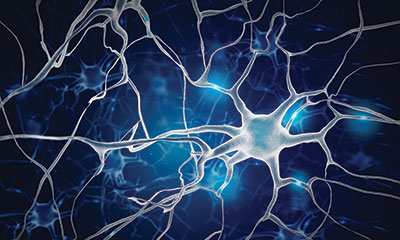
Due to the fact that TEs comprise about 50% of the total genome in mammals and even more genomic real estate in plants and some insects, their direct genetic role in adaptation can be soundly confirmed. However, I will mention just one noteworthy example that dovetails with the aforementioned biological role of TEs in neurological development.
Organismal stress in response to environmental factors plays a major role in shaping behavior and brain function, often with lasting effects. In fact, an important question is how these resulting responses take place in the context of a mature neural cell genome. Synapses are specialized junctions that connect neuronal cells and transmit electrical information from one neuron to another. In this respect, synaptic plasticity (dynamic adaptability) and neurogenesis (development of neurons) are directly related to acute stress that has been shown to regulate the expression of TEs in the rat hippocampus via an epigenetic mechanism.15 (See my previous article on epigenetics.16)
In response to stress, epigenetic systems in concert with TEs maintain genomic and transcriptional stability in sensitive and vulnerable brain regions like the hippocampus. These findings have shown that TEs and the genomic plasticity they create play a significant role in brain function during stress and even disease. Thus, TEs play a critical role in maintaining cellular homeostasis as an important adaptive function.
Conclusion
If it were not for the specified structure and activity of TEs in the broad spectrum of plants and animals, life would not exist. These amazing DNA features are cleverly engineered for each specific kind of creature as part of its genetic blueprint by the Creator, the Lord Jesus Christ.
References
- McClintock, B. 1984. The Significance of Responses of the Genome to Challenge. Science. 226 (4676): 792-801.
- Ravindran, S. 2012. Barbara McClintock and the Discovery of Jumping Genes. Proceedings of the National Academy of Sciences. 109 (50): 20198–20199.
- Federoff, N., S. Wessler, and M. Shure. 1983. Isolation of the Transposable Maize Controlling Elements Ac and Ds. Cell. 35 (1): 235-242.
- Saleh, A., A. Macia, and A. R. Muotri. 2019. Transposable Elements, Inflammation, and Neurological Disease. Frontiers in Neurology. 10: 894.
- Bourque, G. et al. 2018. Ten Things You Should Know About Transposable Elements. Genome Biology. 19: 199.
- Ayarpadikannan, S. and H. S. Kim. 2014. The Impact of Transposable Elements in Genome Evolution and Genetic Instability and Their Implications in Various Diseases. Genomics & Informatics. 12 (3): 98-104.
- Lavialle, C. et al. 2013. Paleovirology of ‘Syncytins’, Retroviral Env Genes Exapted for a Role in Placentation. Philosophical Transactions of the Royal Society B. 368 (1626): 20120507.
- Macfarlan, T. S. et al. 2012. Embryonic Stem Cell Potency Fluctuates with Endogenous Retrovirus Activity. Nature. 487 (7405): 57-63.
- Tomkins, J. P. Transposable Elements Key in Embryo Development. Creation Science Update. Posted on ICR.org July 25, 2012, accessed June 30, 2023.
- Ali, A., K. Han, and P. Liang. 2021. Role of Transposable Elements in Gene Regulation in the Human Genome. Life. 11 (2): 118.
- Chuong, E. B., N. C. Elde, and C. Feschotte. 2016. Regulatory Evolution of Innate Immunity through Co-option of Endogenous Retroviruses. Science. 351 (6277): 1083-1087.
- Tomkins, J. P. Viral Genome Junk Hits the Trash. Creation Science Update. Posted on ICR.org April 4, 2016, accessed June 30, 2023.
- Mustafin, R. N. and E. K. Khusnutdinova. 2020. Involvement of Transposable Elements in Neurogenesis. Vavilov Journal of Genetics and Breeding. 24 (2): 209-218.
- Lawson, H. A., Y. Liang, and T. Wang. 2023. Transposable Elements in Mammalian Chromatin Organization. Nature Reviews Genetics. doi.org/10.1038/s41576-023-00609-6.
- Hunter, R. G. et al. 2014. Stress and the Dynamic Genome: Steroids, Epigenetics, and the Transposome. Proceedings of the National Academy of Sciences. 112 (22): 6828–6833.
- Tomkins, J. P. 2023. Epigenetic Mechanisms: Adaptive Master Regulators of the Genome. Acts & Facts. 52 (4): 14-17.
* Dr. Tomkins is Research Scientist at the Institute for Creation Research and earned his Ph.D. in genetics from Clemson University.





